The most important step in making motherboard connections is to consult the
manual that shipped with the motherboard. There are two options for powering
this motherboard, one uses the standard ATX 20 wire connector, the other
uses the 24 wire ATXe connector borrowed from the world of PC servers. The
24 wire receptacle on this particular Intel motherboard accepts the 20 pin
connector, and it's keyed so it can only be inserted in the proper location,
to one end of the receptacle.
Figure 30: Inserting the 20 wire ATX power
In addition to the standard 20 wire ATX power connector, this style motherboard
also requires an additional 12 V connection. This is implemented as a square
four wire connector that is normally located near the CPU. The connector
is keyed so that it can only be inserted in the proper orientation.
Figure 31: Making the 12 V power connection
Finally, we need to do a "make up" connection, to compensate for the fact
that we used a 20 wire instead of a 24 wire connector for the main motherboard
power. You can buy an adapter that turns a 20 wire connector into a 24 wire
connector, but if the power supply circuit doesn't provide sufficient power,
it won't help. The motherboard provides an extra receptacle for a 1x4 power
supply lead, which is located right next to the 12 V connector on this
motherboard.
Figure 32: Installing the alternate 1x4 power connector
Some power supplies can vary the fan speed for enhanced cooling or decrease
the speed for quiet operation. In order for the BIOS to monitor the fan speed,
the power supply must have a external fan connector that can be attached
to the motherboard. Since this connection is for information only, the fan
doesn't draw power from the connector and it may only use one wire. This
can be attached to the auxiliary or back fan connection point.
Figure 33: Attaching the power supply fan monitoring lead
The large 120 mm exhaust fan that came preinstalled in our Antec case is
powered by a 1x4 connector from the power supply. Since we already brought
a power supply lead to the back of the case for the auxiliary power, the
second connector on the lead makes a convenient power point for the fan.
Figure 34: Providing power to the rear exhaust fan
With such a large number of power supply leads routed between the rear exhaust
fan and the CPU heatsink and fan, it's necessary to secure them out of the
way where they won't interfere with the fans or be in danger of insulator
degradation due to contact with heatsink fins. We bundle all the loose leads
together and cable tie them to the exhaust fan frame.
Figure 35: Bundling the power supply leads
The power lead for the front intake fan attaches to the front fan point on
the motherboard. The 80 mm fan was equipped with a 1x4 adapter for direct
connection to the power supply if a motherboard connection point wasn't
available, but in this case, we're more likely to run out of power supply
leads than motherboard fan connectors.
Figure 36: Attaching the power for the intake fan
The most important connection from the front panel to the motherboard is
the power switch, without which the PC can't be turned on. Depending on the
motherboard and the case manufacturer, some of the front panel leads may
be color coded, or even bundled into semi-standard block connectors. The
functions of the front panel leads are printed right on the connectors, but
the motherboard labeling may be cryptic or even absent, so have the manual
at hand, or print the necessary pages if the manual only exists as a PDF
on the driver CD.
Figure 37: Connecting the front panel power switch
Front panel LED leads installed backwards won't operate, but the won't do
any harm, while switches will work as long as they go on the correct two
posts. Most new cases feature front panel USB and audio ports, and in this
instance, the connector for the front two USB ports is integrated into a
single cable and keyed to be installed in the proper orientation.
Figure 38: Connecting the front panel USB ports


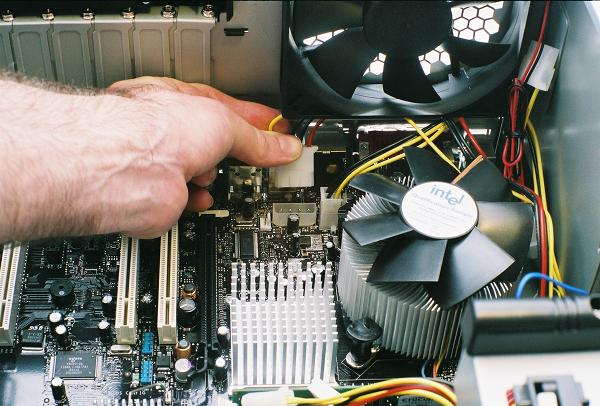
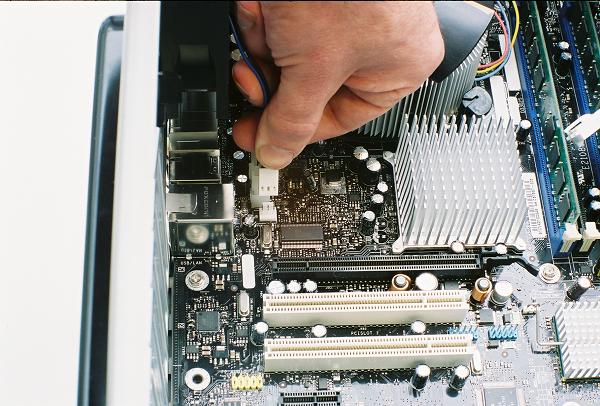


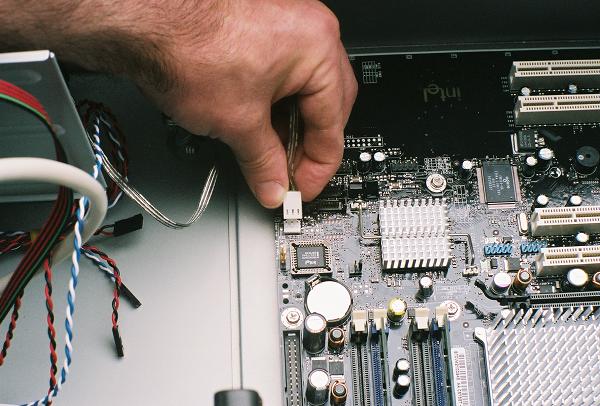
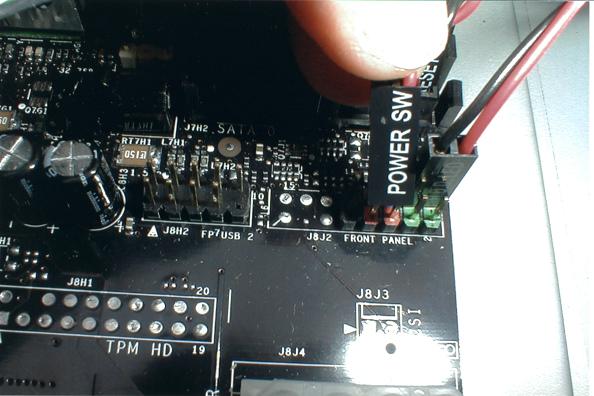
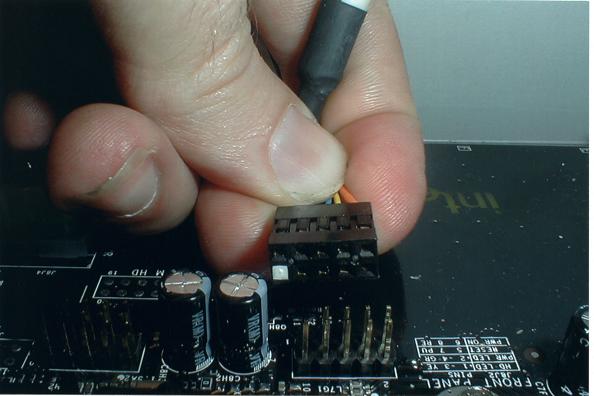
No comments:
Post a Comment